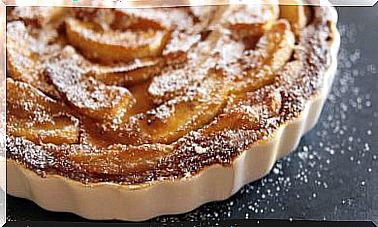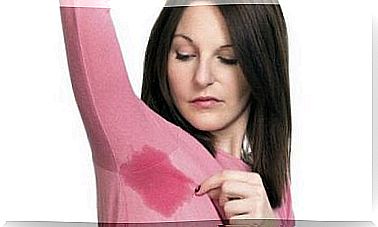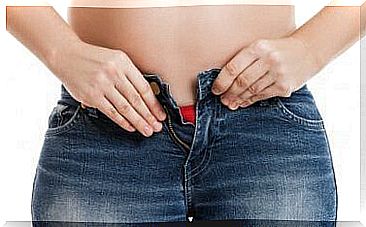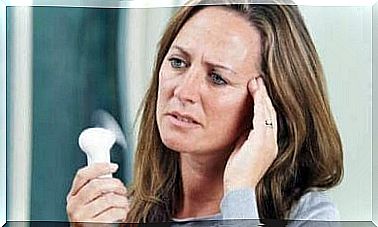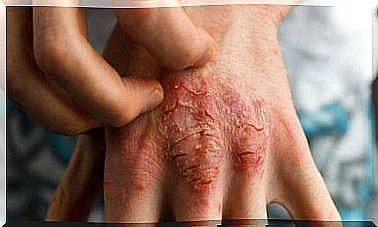Characteristics And Causes Of Lumps In The Breasts
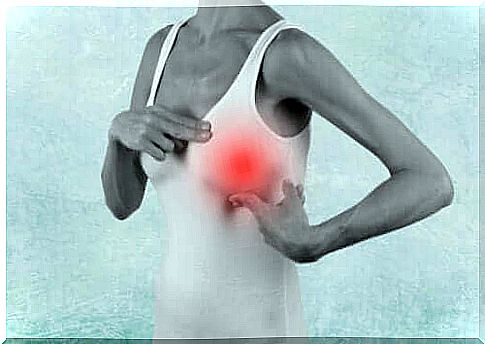
Breast cancer is one of the most feared diseases in women of all ages. So it is not strange if they are worried if they find out that they have lumps in their breasts. Most of these are benign, but how do they appear? Read on to find out.
First , we will establish that breasts are composed of different types of tissues: glands, adipose and connective tissue. Certain nodules and lumps are normal in a breast.
What exactly are lumps in the breasts?
It is a frequent reason for gynecological examinations, since just the thought of a lump creates anxiety and worry. Nodules in the breasts are deep lesions with a different texture than the surrounding tissues and they vary in diameter.
In addition, a nodule does not change throughout the menstrual cycle and usually creates asymmetry with respect to the contralateral breast. It can be painful at times and there may also be secretions from the nipple.
Many people associate lumps in the breasts with breast cancer. It is in a way an unfounded thought, since studies have, after all, revealed that they are benign in over 80% of cases. Many of them may actually be due to hormonal changes during the menstrual cycle or breastfeeding.
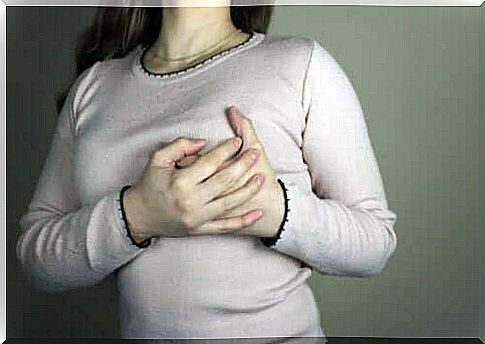
Types of lumps in the breasts
At present, many disorders can manifest as either benign or malignant nodules in the breasts.
Benign nodules
These are not signs of the presence of cancer, and the edges of the nodule are defined, soft, painful, and there are few changes on the skin.
These are among the most common reasons:
- Hormonal changes during menstruation.
- Bust.
- Fibroadenoma.
- Cysts in the breasts.
- Lipomas or papillomas of the glands.
- Enlarged glands.
Malignant nodules
In most of these cases, nodules in the breasts first begin as benign and then develop into cancer. They feel hard, have irregular edges, are immobile, not painful and change the skin or nipple.
This type of nodule is more common in women around the age of 40. A doctor needs to perform several tests to be able to diagnose them properly. They may include an ultrasound scan of the breast, mammography or a biopsy.
Possible causes of lumps in the breasts
We have mentioned some of the pathologies that can lead to this type of disorder. However, it is time to dive deeper into the three most common causes. They all require a medical approach.
Abscesses in the breasts
This disorder is common in young women who are either pregnant or breastfeeding. Abscesses in the breasts manifest as painful, inflamed nodules. The area may be red, swollen and hot to the touch.
They are the result of a bacterial infection and it usually starts as mastitis. It can result in a superinfection where purulent fluid accumulates if left untreated and therefore leads to an abscess.
The treatment of this disorder is no different than that for abscesses elsewhere on the body. In this regard, the fluid in them can be drained – depending on their size. They are quite painful, but can disappear within a few weeks with the right treatment.
2. Cysts in the breasts
It is the most common cause of lumps in the breasts. Estimates actually indicate that 90% of women have them at some point. This type of malformation is common in young people between the ages of 20 and 40. They may be due to hormonal changes, although the cause is not yet completely determined.
These accumulations of fluid, which are in a soft capsule that can move and vary in size, can hit both sides. Uneven abscesses in the breasts, the fluid is rarely infected, so there is no inflammation.
However, some cysts in the breasts can be painful and cause pain in the breasts during menstruation. There are no studies that relate this change to the risk of breast cancer, but regular examinations are recommended.
There is currently no specific treatment for this disorder. Doctors may recommend draining them if they cause a lot of discomfort or are large in size. However, there is still a risk that they will return.
3. Fibroadenoma
It is a benign lump in the breast that forms when the mammary glands grow irregularly. It is often confused with a malignant nodule because it is hard, painless, mobile and can continue to grow over time.
There are three types of fibroadenomas: simple, complex and giant.
- The first is tumors smaller than 5 cm, where all the cells of which it is composed have the same characteristics. That is, there is no risk of malignancy.
- Likewise, complex fibroadenomas have some degree of cellular irregularity. That is, the cells begin to vary from one another. However, according to the American Cancer Society, the risk of developing cancer from a fibroadenoma does not increase significantly.
- As the latter, the giant ones are those that exceed 5 cm in diameter. They disappear over time in most cases. It will only be necessary to keep a constant eye on oneself in order to detect any changes in size and shape.
Extreme cases may require surgical removal, especially when the nodule is too bothersome or large. However, they can come back – just like cysts in the breasts.
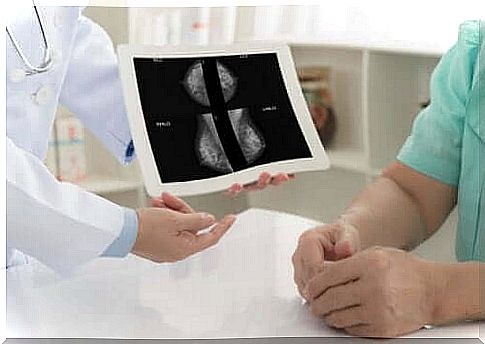
Recommendations for the presence of lumps in the breasts
As you can see, lumps in the breasts do not equal cancer, as they are most likely benign. However, you should always talk to your doctor so that they can perform tests and give you an accurate diagnosis.
In addition , all women should examine their breasts themselves at least once a month. This is because it is the only way to be familiar with the anatomy of her breasts and thus be able to detect any abnormalities.
Thanks for reading.


